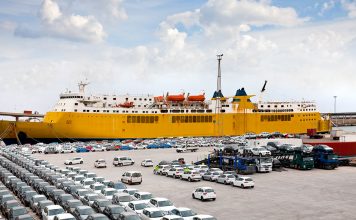Construction of the 27km JKIA-Westlands expressway has been ongoing for some months now. We have been told this project is too historically sacrosanct to be tampered with, too graciously conceived to be aborted and is the cavalry of city traffic menace. That is the way of governments, probably of human nature too. Consensus building around national issues is still a luxury in this continent, remotely inappropriate to our traditions and foreign to our heritage.
Our foundation principles, I bet, are still flawed and we continue to be haunted by our folklore ways. Be that as it may; the construction implementation plan of this project is, to be kind, mediocre, ill-organised and misplaced. I hold dearly so in light of the interruptions city residents are experiencing, especially on Mombasa Road. We seem to always adorn messianic status to foreign contractors that we naively shy from critiquing even the obvious. There is nothing to toss a glass for, so far, in the past few months. It has been an abyss for most city residents using this highway.
First, I cannot comprehend the rationale of commencing the entire highway stretch from JKIA to Westlands at the same time. This is not any other road but, one of the busiest in the Nairobi metropolis. There are numerous roads feeding into this highway, including bypass roads. Common sense project planning would have dictated minimal traffic interruptions; at worst.
And don’t tell me about time? Major highways are being and have been constructed daily around the world with minimal interruptions and in shorter duration compared to this. We must demand better planning of this road construction and not resign to accepting mediocrity. It is doable.
For two and a half years, 27km road, we should have gone for sectional completion of the highway. This should have been an irreducible minimum to whoever was tendering for this work.
Has anyone thought about the economic cost this is causing to the city? The cost of wasting time of drivers and travellers, which is seen as a nonproductive action for many people, leads to a decrease in economic health.
Secondly, delays, which may bring about late arrival at job, meetings and training or education, bring about lost business, disciplinary activity or other individual misfortunes. Another is the time cost due the inability to forecast travel time precisely, prompting drivers to allocate more time to travel “to be safe”. This leaves less time for productive activities.
Next is increase in air contamination and emission of carbon dioxide due to vehicles spending more time on the road, and this contributes to global warming. Increased use of fuel in the long run also increases the costs of fuel. In addition to that, traffic congestion causes wear and tear on vehicles as a consequence of idling in traffic, recurrent acceleration and braking, which leads to more frequent repairs and substitutes. This is an extra cost of maintenance and repair. And many more.
So at what cost are we building this expressway? The jury is out there. But it is generally estimated that the city loses Sh50 million daily due to traffic jams. How far has this current mess augmented the situation? I don’t know – but it has. We are 20 years into the fourth industrial revolution with its limitless project implementation possibilities. In fact, it is inconceivable that a busy city like Shanghai, for example, would accept this kind of road interruptions.
Road implementers would have been demanded of to wrap their heads around near-zero interruption of city operations. Yet here we have a monotonous alacrity for mediocrity. The ease with which we accept it baffles me. What we are witnessing on Mombasa Road, Uhuru Highway and Waiyaki Way cannot be allowed to continue any longer. We have resources, even locally, to tap from should the contractor fail to seamlessly plan the construction with minimal interruptions to city dwellers’ business. It has been done, it can be done. Do it.
SOURCE: https://www.standardmedia.co.ke/commentary/article/2001395492/how-expressway-city-traffic-mess-can-be-avoided



![Top 20 Used Cars to Avoid Buying in Kenya – [PHOTOS]](../../../blog/wp-content/uploads/2013/11/top-used-unreliable-cars-to-avoid2-80x60.jpg)


![Top 20 Used Cars to Avoid Buying in Kenya – [PHOTOS]](../../../blog/wp-content/uploads/2013/11/top-used-unreliable-cars-to-avoid2-100x70.jpg)



